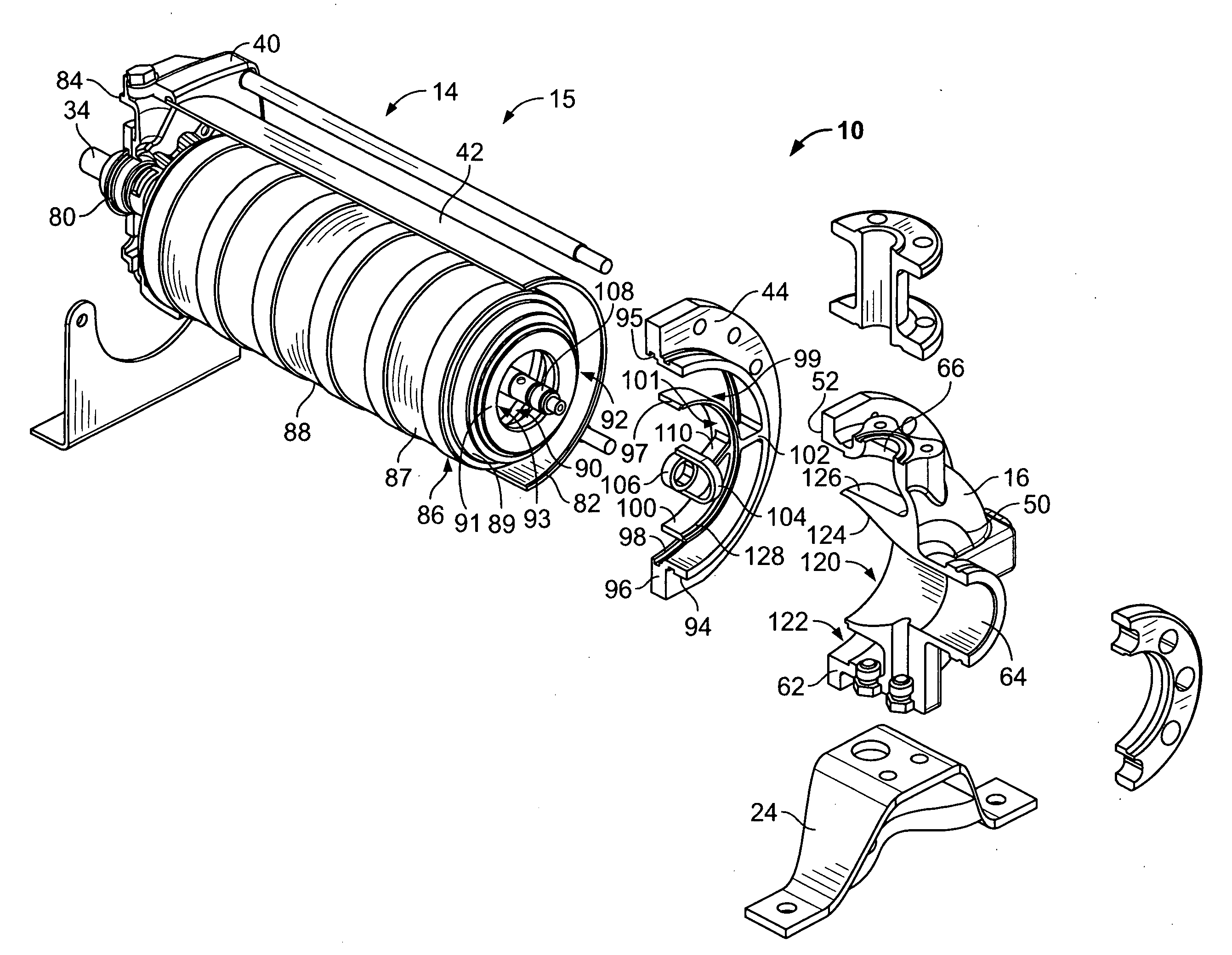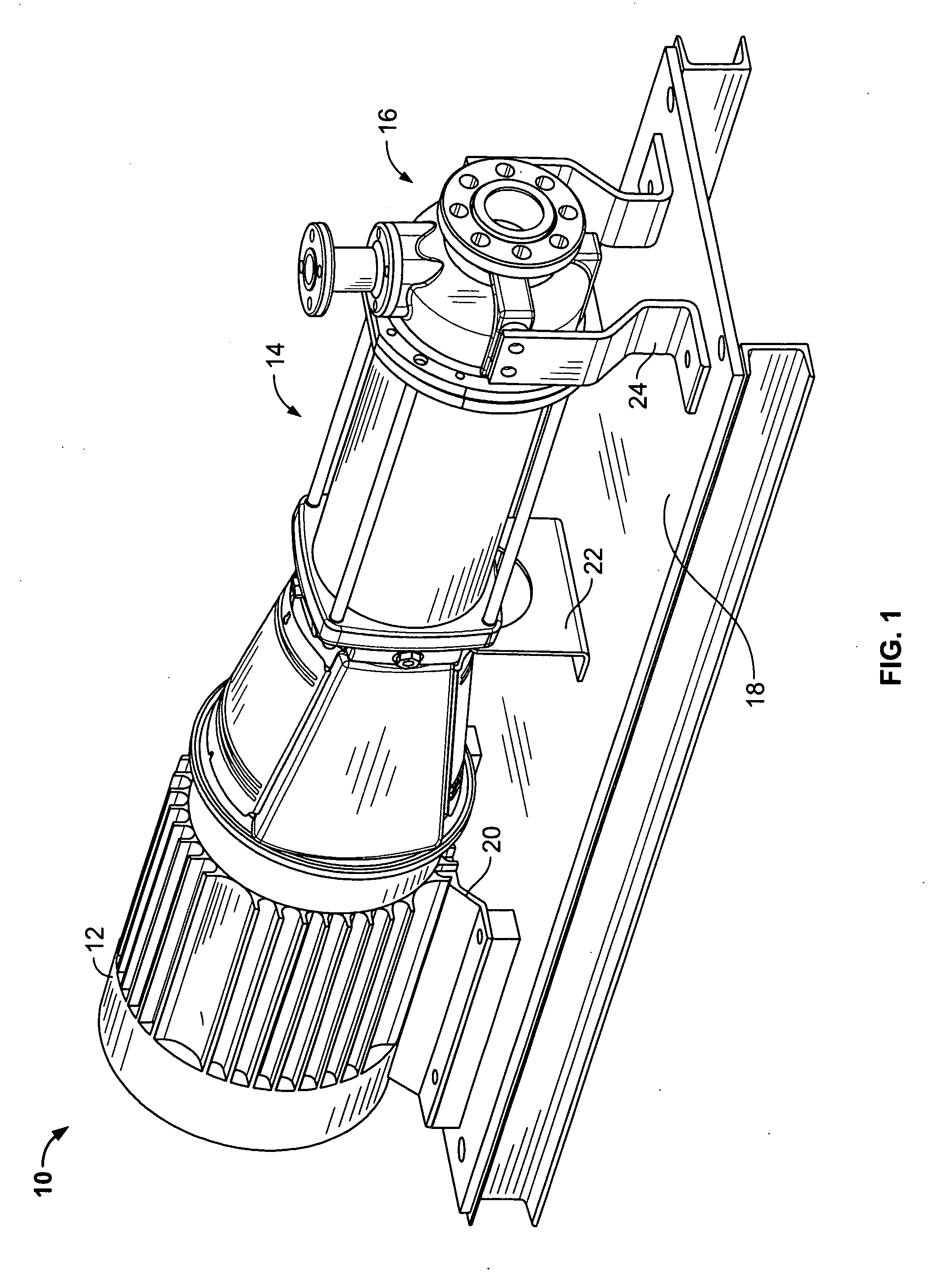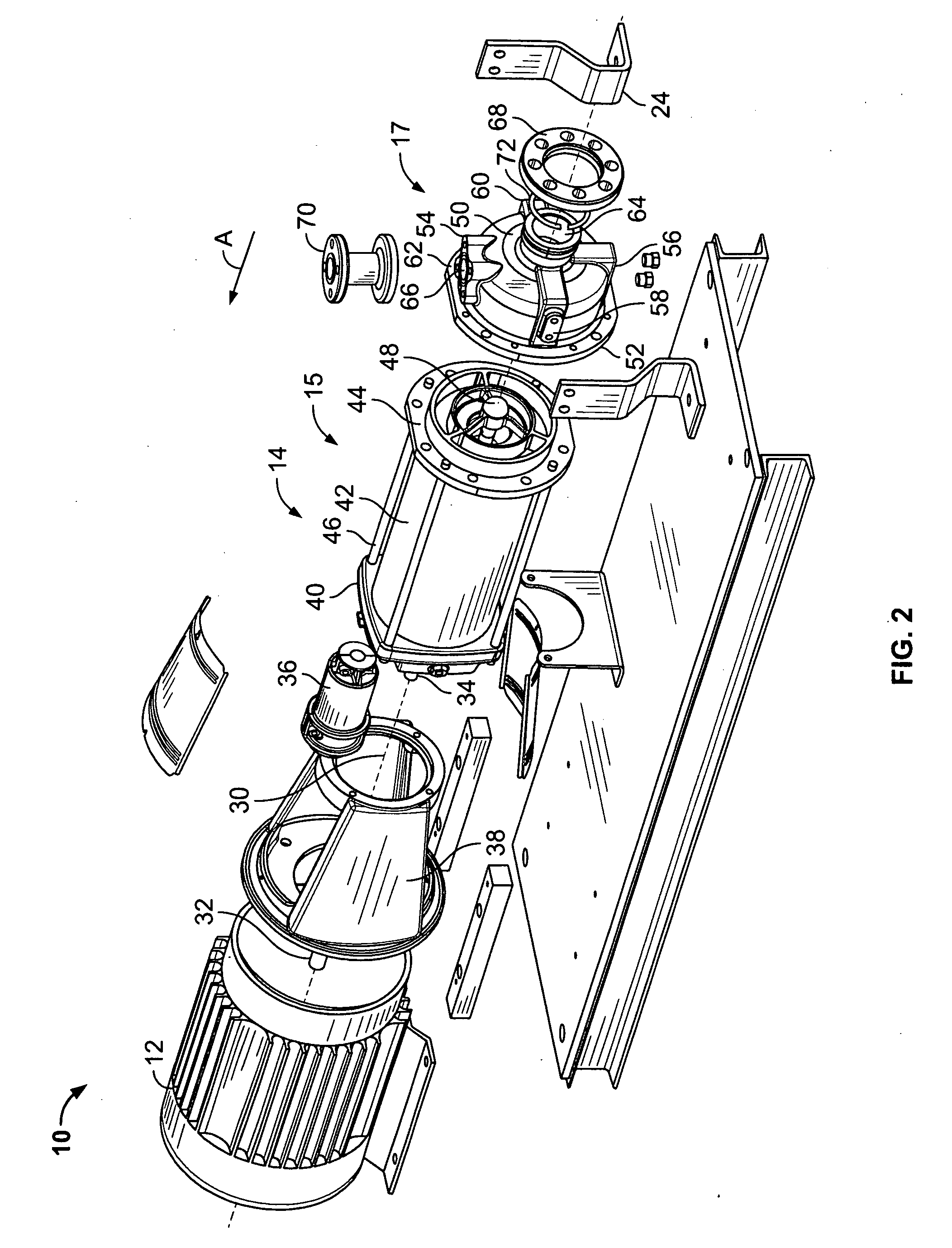Multistage pump assembly having removable cartridge
- Summary
- Abstract
- Description
- Claims
- Application Information
AI Technical Summary
Benefits of technology
Problems solved by technology
Method used
Image
Examples
Embodiment Construction
[0018]FIG. 1 is a side perspective view of a pump assembly 10 formed in accordance with an exemplary embodiment. The pump assembly 10 includes a pump motor 12, a cartridge 15 coupled to the pump motor 12 and a volute 16 coupled to the cartridge 15. The pump assembly 10 may be installed in an existing or new pipe system to a supply pipe and a discharge pipe (not shown) for increasing the pressure and / or flow of water or another fluid within the pipe system. In the illustrated embodiment, the pump assembly 10 represents a horizontal pump assembly that may be mounted to a base 18 via a plurality of supports or braces, such as motor supports 20, a pump stack support 22, and volute supports 24. The base 18 is generally planar and is oriented horizontally, and may be mounted, directly or indirectly to a ground or building surface (not shown). While various embodiments of horizontal pump assemblies are described below, it is understood that the pump assembly 10 may be beneficial in other, ...
PUM
| Property | Measurement | Unit |
|---|---|---|
| Pressure | aaaaa | aaaaa |
| Flow rate | aaaaa | aaaaa |
| Shape | aaaaa | aaaaa |
Abstract
Description
Claims
Application Information
 Login to View More
Login to View More - R&D
- Intellectual Property
- Life Sciences
- Materials
- Tech Scout
- Unparalleled Data Quality
- Higher Quality Content
- 60% Fewer Hallucinations
Browse by: Latest US Patents, China's latest patents, Technical Efficacy Thesaurus, Application Domain, Technology Topic, Popular Technical Reports.
© 2025 PatSnap. All rights reserved.Legal|Privacy policy|Modern Slavery Act Transparency Statement|Sitemap|About US| Contact US: help@patsnap.com



